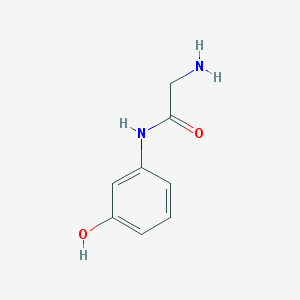As a general rule of thumb, a nitrogen is usually a better hydrogen bond acceptor than an oxygen. There is a brief overview on Wikipedia with a couple of values and where they were derived from.
This makes sense intuitively, too. Ammonia is a stronger base than water as it is a better proton acceptor. An amine is a stronger base than an alcohol.
In your example, 2-amino-N-(3-hydroxyphenyl)acetamide, there are three functional groups (or four if you want to count the aromatic ring, too): a primary amine, a secondary amide, and a phenolic alcohol.
The phenolic alcohol is rather acidic and not such a good hydrogen bond acceptor, as some of the lone pairs are in conjugation with the aromatic ring.
The amide is also a delocalised system, which makes the nitrogen pretty unavailable for hydrogen bonding. For this functional group, if it were separate, the π-orbital would be the HOMO, and this is where the protonation/ proton-accepting will happen; due to the delocalisation this is less so the case. An amide usually is not a good hydrogen-bond acceptor.
The amine is primary, which means there is much space around it and it can directly interact with the solvent. This is a good hydrogen-bond acceptor.
Therefore neither oxygen will be the best hydrogen-bond acceptor.

